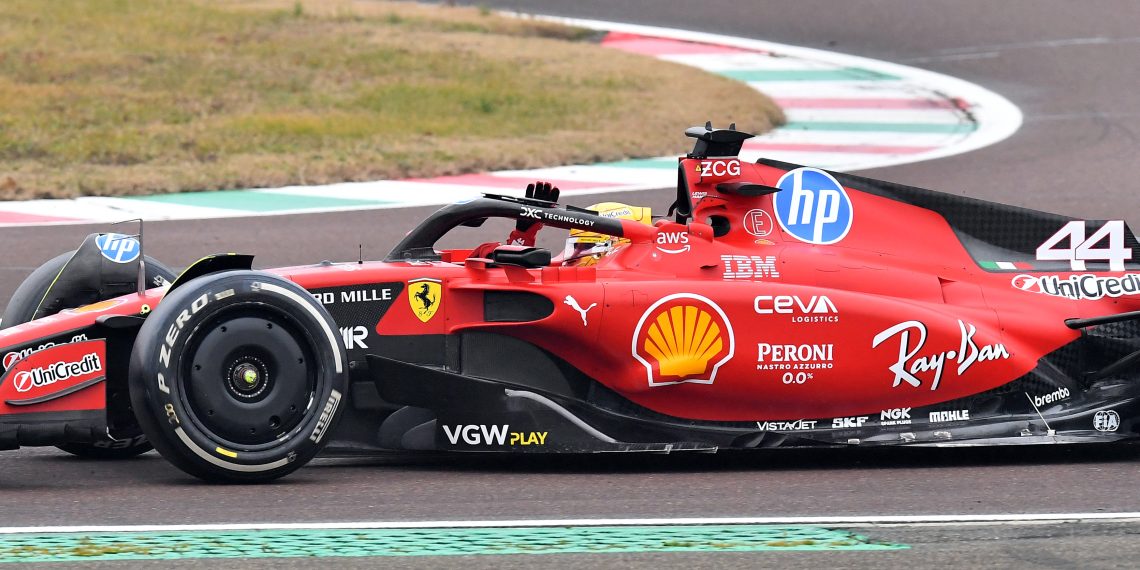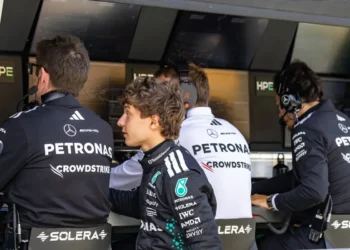Lewis Hamilton is finally stepping into Ferrari machinery this week, but his much-anticipated debut behind the wheel won’t be what fans imagined. The seven-time world champion is set to drive a modified version of Ferrari’s SF-24 in a crucial two-day Pirelli tyre test at Barcelona, but here’s the catch—it won’t feel like a true Ferrari experience at all.
A Test Unlike Any Other: The Pirelli Factor
Hamilton, along with Ferrari teammate Charles Leclerc, will hit the Circuit de Barcelona-Catalunya starting Tuesday for a Pirelli-led test aimed at developing Formula 1’s 2026-spec tyres. Unlike private team testing, this session will be entirely controlled by Pirelli, meaning neither Ferrari nor its drivers will have insight into the specific tyres they are running or what exactly is being evaluated.
The test is part of a broader effort to refine F1’s future tyres, which will retain their 18-inch rim size but feature significant dimensional reductions:
- Front tyres narrowed by 25mm
- Rear tyres reduced by 30mm
- Overall diameter shrinkage from 720mm to around 705-710mm
While these changes may seem minor, they are set to alter car handling significantly, making it a critical transition phase for all teams ahead of 2026’s regulatory shake-up.
Why This Ferrari Won’t Feel Like a Ferrari
One major twist in this test is that Ferrari has modified its 2024 SF-24 to comply with new FIA regulations for ‘mule cars.’ These adaptations are designed to simulate the reduced downforce and performance levels of the 2026 challengers, meaning Hamilton’s first Ferrari experience will be far from the full-throttle, high-downforce monster he’ll eventually race.
To ensure teams don’t exploit these tests for a performance advantage, the FIA has mandated that mule cars:
- Must feature only minimal modifications for tyre development
- Cannot be used to test 2026 components
- Cannot provide teams with information outside of the tyre evaluation scope
This means Hamilton won’t be getting an early insight into Ferrari’s true 2024 performance levels or any technical details for next season. However, there is still some hidden value in this unusual test.
What Hamilton Will Learn
Despite the limitations, any seat time in a Ferrari is valuable for Hamilton. This test will give him an opportunity to:
✔ Get acquainted with Ferrari’s power unit characteristics
✔ Familiarize himself with cockpit controls and operational procedures
✔ Understand Ferrari’s internal team dynamics and engineers
While McLaren has opted to modify a 2023 MCL60 for its 2026 mule, Ferrari has taken a more aggressive approach by adjusting its latest machinery. This might give Hamilton a slight advantage in adapting to Ferrari’s real-world systems, even if it won’t reflect true performance levels.
Barcelona Just the Beginning – The 2026 Tyre Development Plan
Pirelli has been running an extensive series of tests to fine-tune the 2026 tyres, with multiple teams taking part:
- Aston Martin conducted the first evaluation last September
- Mercedes & Alpine did wet-weather testing in October & November
- McLaren ran a wet tyre program at Paul Ricard last week
After Barcelona, the next slick tyre tests will feature Alpine and Mercedes on February 12-13, followed by Williams and Alpine staying on in Bahrain for extra evaluations post-pre-season testing.
What This Means for Ferrari’s Future
While this test won’t give Hamilton or Ferrari a performance edge for 2024, it does signal one thing loud and clear—Ferrari is leaving nothing to chance. With Hamilton making his move to Maranello in 2025, every bit of preparation counts.
Even in a detuned mule car, his first laps in Ferrari red mark the beginning of a seismic shift in F1’s power dynamic.













